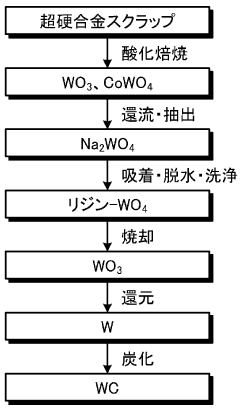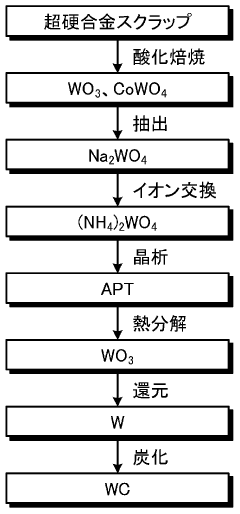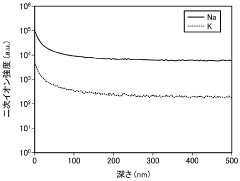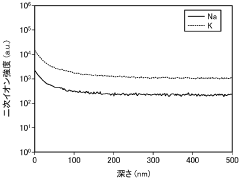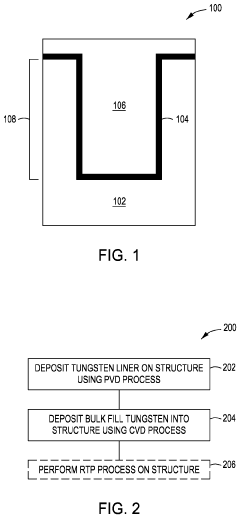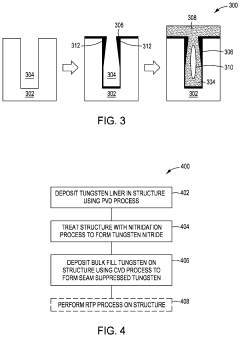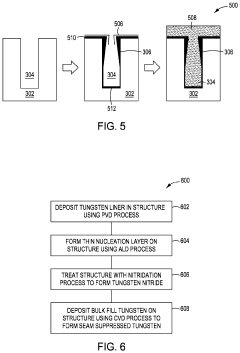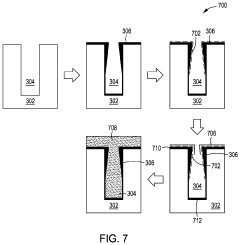How To Enhance Tungsten's Performance In Critical Applications?
Tungsten Enhancement Goals
Tungsten, renowned for its exceptional properties, stands at the forefront of critical applications across various industries. The enhancement of tungsten's performance is a crucial goal driven by the ever-increasing demands of advanced technologies. This objective encompasses several key areas of improvement, each addressing specific challenges and opportunities in tungsten utilization.
One primary enhancement goal is to increase tungsten's high-temperature strength and creep resistance. As applications in aerospace, nuclear power, and advanced manufacturing push the boundaries of material capabilities, there is a pressing need for tungsten alloys that can maintain structural integrity under extreme thermal conditions. Researchers aim to develop tungsten-based materials that exhibit superior mechanical properties at temperatures exceeding 2000°C, enabling their use in next-generation turbine engines, fusion reactors, and hypersonic vehicles.
Another critical objective is to improve tungsten's ductility and formability, particularly at room temperature. The inherent brittleness of tungsten limits its fabrication into complex shapes and reduces its resistance to thermal shock. Enhancing these properties would significantly expand tungsten's applicability in various fields, from medical devices to advanced electronics. Strategies under investigation include alloying with ductile elements, nanostructuring, and developing novel processing techniques to refine grain structure.
Radiation resistance is a paramount concern for tungsten's use in nuclear applications. Enhancing its ability to withstand high-energy particle bombardment without significant degradation is crucial for its role in fusion reactor components and nuclear shielding. Research efforts focus on creating tungsten composites and engineered microstructures that can better absorb and dissipate radiation-induced damage.
Improving tungsten's corrosion resistance, particularly in high-temperature oxidizing environments, is another key goal. While tungsten exhibits excellent corrosion resistance in many environments, its susceptibility to oxidation at elevated temperatures limits its use in certain applications. Developing protective coatings or alloying strategies to mitigate oxidation could greatly extend tungsten's service life in harsh operating conditions.
Lastly, enhancing the thermal management properties of tungsten is crucial for its application in high-heat-flux components. This includes improving its thermal conductivity and tailoring its coefficient of thermal expansion to match that of other materials in composite structures. Such enhancements would optimize tungsten's performance in heat sinks, thermal management systems, and high-power electronic devices.
These enhancement goals collectively aim to push the boundaries of tungsten's capabilities, enabling its use in increasingly demanding applications and paving the way for technological advancements across multiple sectors. The realization of these objectives requires interdisciplinary research efforts, combining materials science, engineering, and advanced manufacturing techniques to unlock tungsten's full potential in critical applications.
Market Demand Analysis
The market demand for enhanced tungsten performance in critical applications has been steadily growing across various industries. This surge is primarily driven by the increasing need for materials that can withstand extreme conditions in advanced technological sectors. The aerospace industry, in particular, has shown a significant appetite for improved tungsten-based components, especially in rocket nozzles and thermal protection systems for spacecraft. The demand is fueled by the expansion of space exploration programs and the growing commercial space industry.
In the nuclear energy sector, the push for more efficient and safer reactors has led to a heightened interest in advanced tungsten alloys. These materials are crucial for fusion reactor components and radiation shielding, where tungsten's high melting point and radiation resistance are invaluable. As countries worldwide invest in next-generation nuclear technologies, the market for enhanced tungsten products is expected to expand considerably.
The semiconductor industry represents another major driver of demand for high-performance tungsten. As chip manufacturers continue to push the boundaries of miniaturization and processing power, they require materials that can maintain stability at higher temperatures and withstand more intense manufacturing processes. Tungsten's role in interconnects, heat sinks, and other critical components makes it indispensable in this rapidly evolving field.
Defense applications also contribute significantly to the market demand for enhanced tungsten. The development of advanced armor systems, kinetic energy penetrators, and high-density alloys for military hardware relies heavily on tungsten's unique properties. As global defense spending continues to rise, the demand for tungsten-based materials with improved performance characteristics is likely to increase in tandem.
The medical industry, particularly in the field of radiation oncology, has shown growing interest in tungsten for its radiation shielding properties. As cancer treatment technologies advance, there is an increasing need for more effective and compact shielding materials in medical equipment. This trend is expected to drive further demand for enhanced tungsten products in the healthcare sector.
In the automotive industry, the shift towards electric vehicles has created new opportunities for tungsten applications. The material's high wear resistance and thermal conductivity make it valuable for various components in electric powertrains and battery systems. As the electric vehicle market expands, so does the demand for tungsten with enhanced performance characteristics.
Overall, the market for enhanced tungsten in critical applications is poised for substantial growth. Industries ranging from aerospace and energy to electronics and healthcare are actively seeking ways to leverage tungsten's unique properties to push the boundaries of technological advancement. This diverse and growing demand underscores the importance of continued research and development efforts to enhance tungsten's performance across a wide spectrum of critical applications.
Current Challenges
Tungsten, renowned for its exceptional properties, faces several critical challenges in enhancing its performance for advanced applications. One of the primary obstacles is its inherent brittleness at room temperature, which limits its use in high-stress environments. This characteristic makes tungsten susceptible to cracking and failure under certain conditions, particularly in applications requiring impact resistance or cyclic loading.
The high melting point of tungsten, while advantageous in many scenarios, presents difficulties in processing and shaping the material. Traditional manufacturing methods often struggle to produce complex geometries or fine structures without compromising the material's integrity. This limitation hinders the development of intricate tungsten components for specialized applications in aerospace, nuclear, and advanced energy sectors.
Oxidation resistance remains a significant challenge for tungsten, especially at elevated temperatures. When exposed to oxygen-rich environments above 400°C, tungsten rapidly forms volatile oxides, leading to material loss and degradation of mechanical properties. This susceptibility to oxidation restricts tungsten's use in high-temperature applications where exposure to air is unavoidable.
Another pressing issue is the radiation-induced embrittlement of tungsten, particularly relevant in nuclear fusion reactor environments. Neutron irradiation can cause significant changes in the microstructure of tungsten, leading to increased brittleness and reduced thermal conductivity. These changes compromise the material's performance and longevity in critical nuclear applications.
The recrystallization behavior of tungsten at high temperatures poses challenges in maintaining its mechanical strength. As tungsten recrystallizes, it can experience grain growth, which often results in a loss of strength and ductility. This phenomenon limits the long-term stability of tungsten components in high-temperature applications, necessitating careful control of the material's microstructure.
Joining tungsten to other materials, particularly in composite structures or multi-material systems, presents significant technical difficulties. The high melting point and unique thermal expansion characteristics of tungsten make conventional joining techniques less effective, often resulting in weak interfaces or residual stresses that compromise the integrity of the joined components.
Lastly, the environmental and economic concerns associated with tungsten mining and processing pose challenges to its widespread adoption. The energy-intensive extraction and refining processes, coupled with the limited global distribution of tungsten ore deposits, raise questions about the long-term sustainability and cost-effectiveness of tungsten-based solutions in critical applications.
Existing Enhancement Methods
01 Tungsten-based alloys for improved performance
Development of tungsten-based alloys with enhanced properties such as improved strength, ductility, and thermal stability. These alloys are designed to overcome the inherent brittleness of pure tungsten while maintaining its high-temperature capabilities, making them suitable for various applications in extreme environments.- Tungsten-based alloys for improved performance: Development of tungsten-based alloys with enhanced properties such as improved strength, ductility, and thermal stability. These alloys are designed to overcome the inherent brittleness of pure tungsten while maintaining its high-temperature capabilities, making them suitable for various applications in aerospace, nuclear, and other high-performance industries.
- Tungsten thin film deposition techniques: Advanced methods for depositing tungsten thin films with improved characteristics. These techniques focus on achieving better adhesion, uniformity, and density of tungsten films, which are crucial for applications in microelectronics, semiconductor devices, and protective coatings. The processes may include chemical vapor deposition (CVD), physical vapor deposition (PVD), or atomic layer deposition (ALD).
- Tungsten composites for enhanced properties: Development of tungsten-based composite materials that combine the high-temperature strength of tungsten with other beneficial properties. These composites may incorporate reinforcing phases, such as carbides or oxides, to enhance wear resistance, toughness, or thermal conductivity. Applications include cutting tools, armor materials, and high-temperature structural components.
- Surface treatment and modification of tungsten: Techniques for modifying the surface properties of tungsten to enhance its performance in specific applications. These may include surface hardening, coating processes, or chemical treatments to improve wear resistance, corrosion resistance, or electrical conductivity. Such modifications are particularly important in applications like electrical contacts, welding electrodes, and plasma-facing components.
- Tungsten in nuclear applications: Utilization of tungsten and its alloys in nuclear energy applications, focusing on their radiation resistance and high-temperature stability. This includes the development of tungsten-based materials for fusion reactor components, radiation shielding, and nuclear fuel applications. Research in this area aims to improve the longevity and safety of nuclear systems under extreme conditions.
02 Tungsten thin film deposition techniques
Advanced methods for depositing tungsten thin films with improved characteristics. These techniques focus on achieving better adhesion, uniformity, and reduced resistivity in tungsten films, which are crucial for semiconductor manufacturing and other microelectronic applications.Expand Specific Solutions03 Tungsten composites for enhanced mechanical properties
Creation of tungsten-based composite materials that combine the high-temperature strength of tungsten with other beneficial properties. These composites often incorporate reinforcing phases or alloying elements to improve toughness, wear resistance, and overall mechanical performance in demanding applications.Expand Specific Solutions04 Surface treatment and coating of tungsten components
Development of surface modification techniques and coatings for tungsten parts to enhance their performance. These treatments aim to improve corrosion resistance, reduce friction, increase wear resistance, and extend the lifespan of tungsten components in various industrial and technological applications.Expand Specific Solutions05 Tungsten in nuclear fusion and high-energy physics applications
Optimization of tungsten materials for use in nuclear fusion reactors and high-energy physics experiments. This includes developing tungsten alloys and composites that can withstand extreme temperatures, radiation, and plasma exposure while maintaining structural integrity and minimizing activation.Expand Specific Solutions
Key Industry Players
The enhancement of tungsten's performance in critical applications is a rapidly evolving field, currently in a growth phase. The market size is expanding due to increasing demand in aerospace, electronics, and energy sectors. Technologically, it's progressing from mature to advanced stages, with companies like Applied Materials, Inc. and Sumitomo Electric Industries Ltd. leading innovation. Universities such as Central South University and Xi'an Jiaotong University are contributing significant research. The competitive landscape is diverse, including established players like Kyocera Corp. and emerging specialists like A.L.M.T. Corp. and Japan New Metals Co., Ltd. This mix of academic, industrial, and specialized entities is driving rapid advancements in tungsten technology, focusing on improving its properties for high-performance applications.
Applied Materials, Inc.
A.L.M.T. Corp.
Core Tungsten Innovations
- The development of a tungsten oxide powder with a higher sodium concentration than potassium throughout its depth direction, which enhances the reaction promoting effect in hydrogen reduction treatment, allowing for efficient production of metallic tungsten and subsequently tungsten carbide by maintaining sodium in a molten state and suppressing potassium volatilization, thereby facilitating grain growth at lower energy levels.
- The proposed method involves a physical vapor deposition of a tungsten liner, followed by an atomic layer deposition nucleation layer and a chemical vapor deposition bulk fill process, with a nitridation step and optional rapid thermal processing to reduce internal stresses and lower resistivity, using argon or krypton as ambient gases and optimizing temperature, pressure, and nitridation conditions.
Environmental Considerations
The environmental impact of tungsten production and use is a critical consideration in enhancing its performance for critical applications. Tungsten mining and processing can lead to significant environmental degradation, including soil erosion, water pollution, and habitat destruction. The extraction process often involves the use of toxic chemicals, which can contaminate local water sources and ecosystems if not properly managed. Additionally, the energy-intensive nature of tungsten production contributes to greenhouse gas emissions and climate change concerns.
To address these environmental challenges, researchers and industry leaders are exploring more sustainable practices in tungsten production and utilization. One approach involves improving the efficiency of extraction and processing methods to reduce waste and energy consumption. This includes developing advanced recycling technologies to recover tungsten from scrap materials, thereby decreasing the need for new mining operations and minimizing environmental impact.
Another area of focus is the development of environmentally friendly coatings and treatments for tungsten components. These innovations aim to enhance the material's performance while reducing the need for harmful chemicals in manufacturing processes. For instance, researchers are investigating eco-friendly alternatives to traditional tungsten carbide coatings, which often involve the use of cobalt, a toxic and environmentally problematic element.
The lifecycle assessment of tungsten products is gaining importance in critical applications. This involves evaluating the environmental impact of tungsten components from production to disposal, including their use phase. By understanding the full environmental footprint, engineers can make informed decisions to optimize tungsten's performance while minimizing negative ecological effects.
Efforts are also being made to improve the recyclability and end-of-life management of tungsten-containing products. This includes designing components for easy disassembly and material recovery, as well as establishing efficient recycling systems to ensure that valuable tungsten resources are not lost to landfills. Such initiatives not only reduce the environmental burden of tungsten production but also contribute to the conservation of this critical material.
As regulations on environmental protection become more stringent globally, the tungsten industry is adapting by implementing cleaner production technologies and practices. This includes investing in water treatment facilities, dust control systems, and energy-efficient equipment. These measures not only help companies comply with environmental standards but also improve their overall operational efficiency and sustainability.
Regulatory Framework
The regulatory framework surrounding tungsten's use in critical applications is complex and multifaceted, reflecting the material's strategic importance and potential environmental impacts. At the international level, the Organization for Economic Co-operation and Development (OECD) has established guidelines for responsible sourcing of minerals, including tungsten, to ensure ethical and sustainable practices throughout the supply chain. These guidelines aim to prevent the use of conflict minerals and promote transparency in the industry.
In the United States, the Dodd-Frank Wall Street Reform and Consumer Protection Act of 2010 includes provisions specifically addressing conflict minerals, including tungsten. Companies are required to disclose the origin of tungsten used in their products and ensure it is not sourced from conflict-affected areas. The European Union has implemented similar regulations through its Conflict Minerals Regulation, which came into full force in January 2021.
Environmental regulations also play a significant role in tungsten's use and production. The extraction and processing of tungsten ore can have substantial environmental impacts, leading to strict regulations on mining operations and waste management. In many jurisdictions, environmental impact assessments are mandatory before new tungsten mining projects can be approved.
The use of tungsten in specific applications is subject to various industry standards and regulations. For instance, in the aerospace industry, the Federal Aviation Administration (FAA) and the European Union Aviation Safety Agency (EASA) have stringent requirements for materials used in aircraft components, including those containing tungsten. These regulations often focus on material properties, quality control, and traceability.
In the medical field, tungsten's use in radiation shielding and medical devices is regulated by agencies such as the U.S. Food and Drug Administration (FDA) and the European Medicines Agency (EMA). These bodies enforce strict guidelines on material purity, biocompatibility, and performance standards to ensure patient safety.
As research into enhancing tungsten's performance continues, regulatory frameworks are likely to evolve. Emerging technologies and novel applications may necessitate new standards and regulations. Researchers and industry professionals must stay informed about these regulatory developments to ensure compliance and optimize tungsten's use in critical applications.
